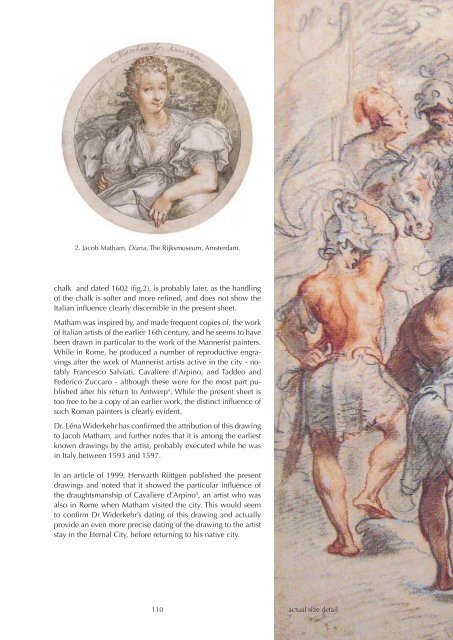Catalogue-2014-Jean-Luc-Baroni
- No tags were found...
Create successful ePaper yourself
Turn your PDF publications into a flip-book with our unique Google optimized e-Paper software.
2. Jacob Matham, Diana, The Rijksmuseum, Amsterdam.<br />
chalk and dated 1602 (fig.2), is probably later, as the handling<br />
of the chalk is softer and more refined, and does not show the<br />
Italian influence clearly discernible in the present sheet.<br />
Matham was inspired by, and made frequent copies of, the work<br />
of Italian artists of the earlier 16th century, and he seems to have<br />
been drawn in particular to the work of the Mannerist painters.<br />
While in Rome, he produced a number of reproductive engravings<br />
after the work of Mannerist artists active in the city - notably<br />
Francesco Salviati, Cavaliere d’Arpino, and Taddeo and<br />
Federico Zuccaro - although these were for the most part published<br />
after his return to Antwerp 4 . While the present sheet is<br />
too free to be a copy of an earlier work, the distinct influence of<br />
such Roman painters is clearly evident.<br />
Dr. Léna Widerkehr has confirmed the attribution of this drawing<br />
to Jacob Matham, and further notes that it is among the earliest<br />
known drawings by the artist, probably executed while he was<br />
in Italy between 1593 and 1597.<br />
In an article of 1999, Herwarth Röttgen published the present<br />
drawings and noted that it showed the particular influence of<br />
the draughtsmanship of Cavaliere d’Arpino 5 , an artist who was<br />
also in Rome when Matham visited the city. This would seem<br />
to confirm Dr Widerkehr’s dating of this drawing and actually<br />
provide an even more precise dating of the drawing to the artist<br />
stay in the Eternal City, before returning to his native city.<br />
110<br />
actual size detail
















